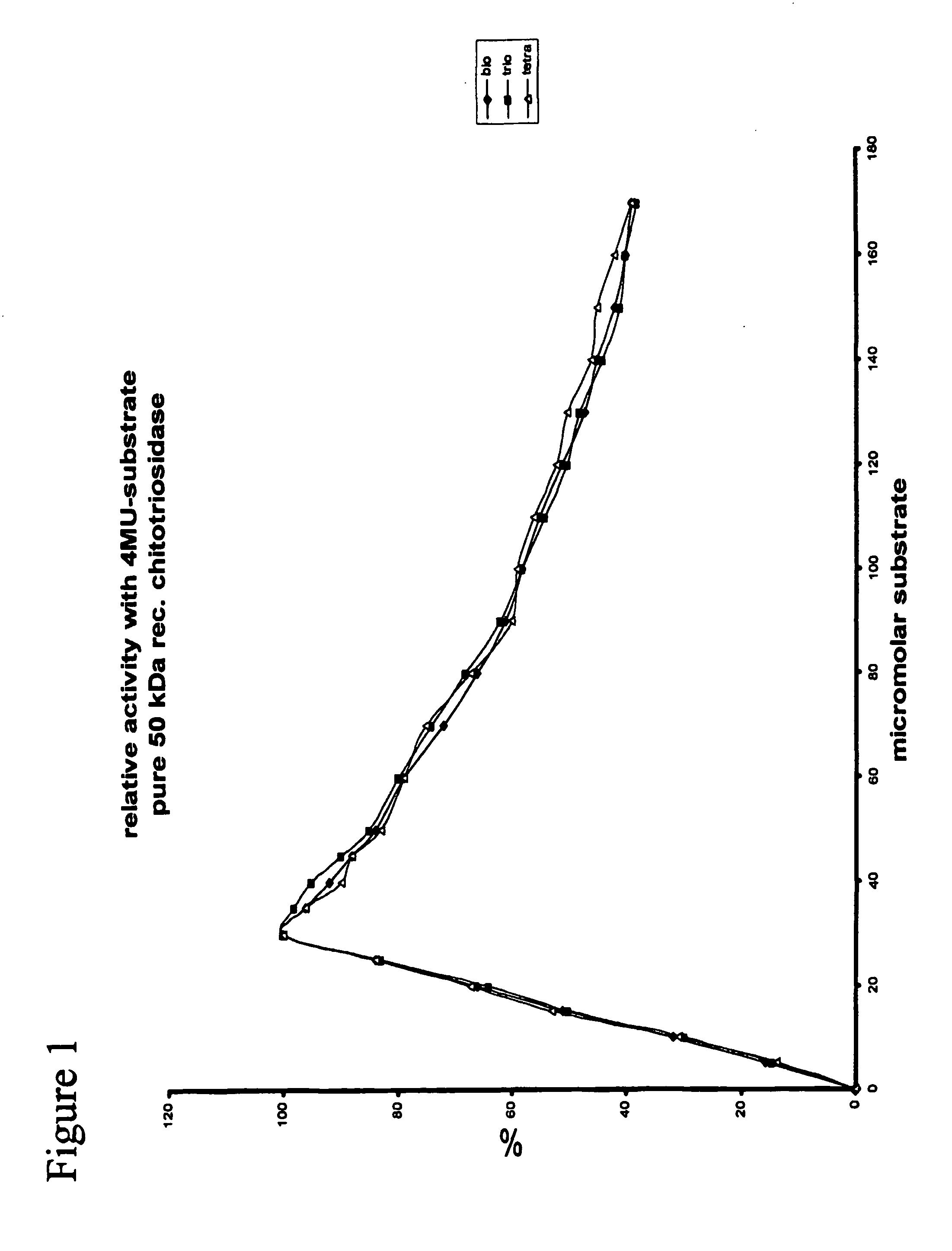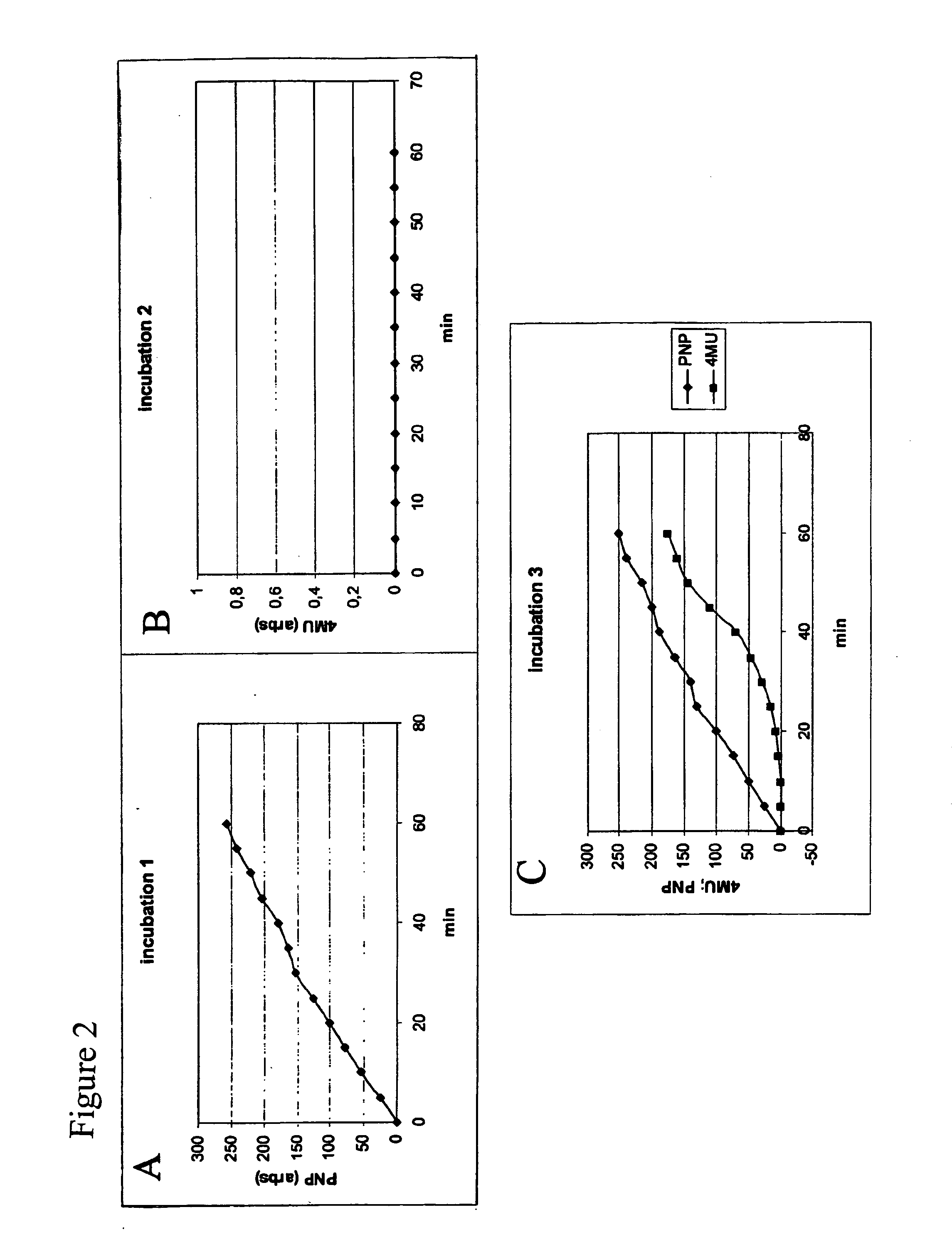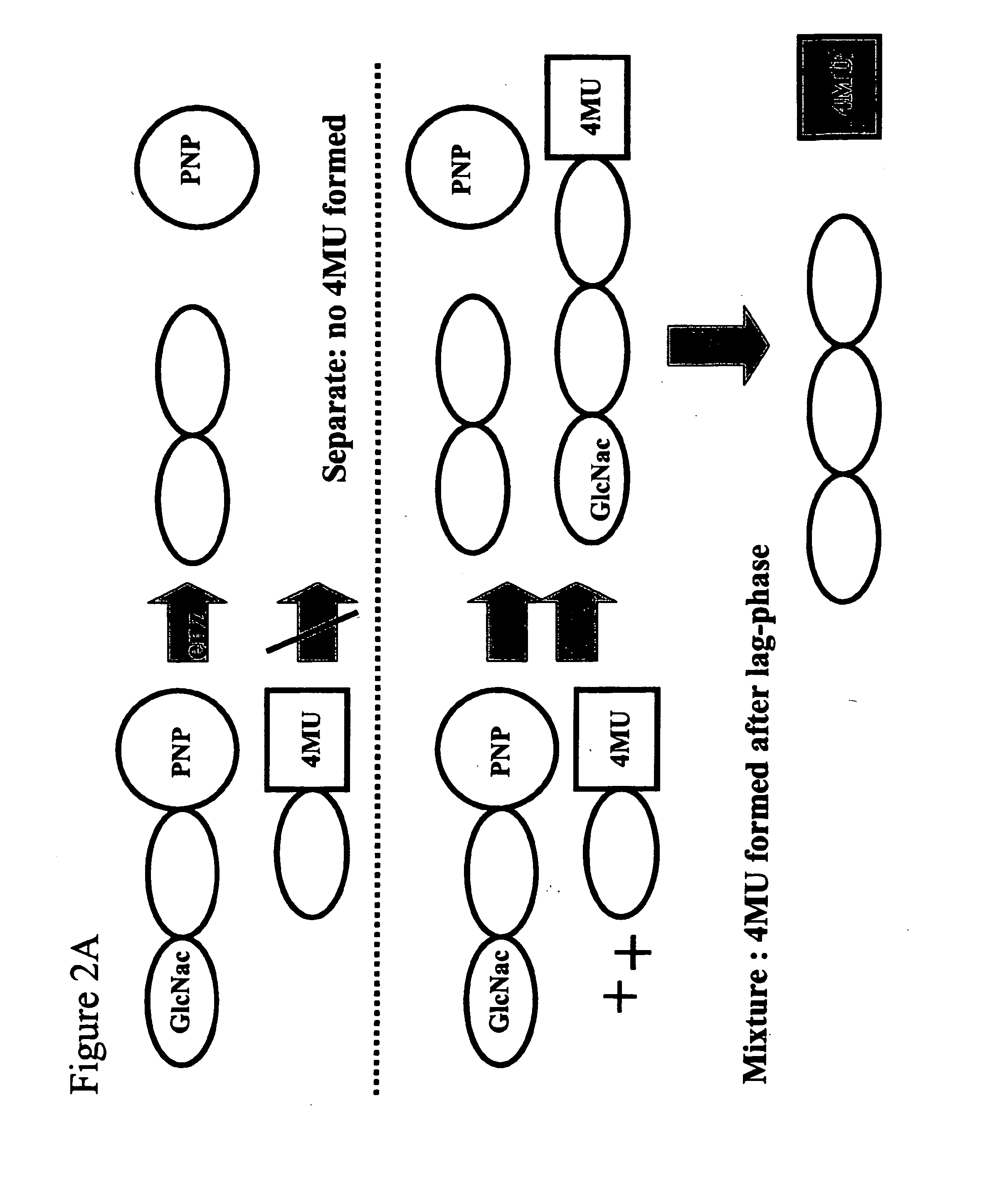Means and methods for detecting endoglycosidase activity
- Summary
- Abstract
- Description
- Claims
- Application Information
AI Technical Summary
Benefits of technology
Problems solved by technology
Method used
Image
Examples
example i
[0103] It was investigated whether the terminal, reducing end N-acetylglucosamine 5 residues in the substrates could be directly involved in reactions catalysed by chitotriosidase. To test this the following, seminal experiment was conceived. Pure chitotriosidase was incubated with 4-methylumbelliferyl-N-acetyiglucosamine (4-MU-hexosamine) alone (incubation 1), PNP-chitobiose alone (incubation 2) and a combination of both substrates (incubation 3). As expected, 4-MU-hexosamine is no substrate and therefore no fluorescent 4-MU is released during the incubation 1. In contrasts, PNP-chitobiose is a substrate and coloured PNP is formed during the incubation 2. Obviously, no fluorescent 4-MU is formed following incubation 2. During the first minutes of incubation only the colored PNP is formed, but surprisingly after some time there is also ongoing formation of the fluorescent 4-MU. (See FIG. 2).
[0104] The explanation for this remarkable phenomenon is depictured in FIG. 2A. Upon exposur...
example ii
[0106] Development of novel, superior substrates for measuring hydrolytic activity. After identifying the fact that the transglycosylase activity of chitotriosidase is instrumental to the problems encountered with 4-MU-chito-oligomer substrates, a way was searched to circumvent this complication. It was conceived that a substrate without the hydroxyl at the C-4 position in the reducing end N-acetylglucosamine could not act as acceptor. At the same time such modification should not interfere with the hydrolysis of the compound by chitotriosidase. The most attractive modification appeared an exchange of the C4-OH for —H, i.e. creating a deoxy-compound. It was envisioned that such type of compound should be the ideal substrate, being well hydrolyzed but being no acceptor for transglycosylation.
[0107] To test the value of this thought 4-MU-deoxychitobiose was synthesized, according to the synthesis pathway described in Example 4. The structure of the compound (4MU-deoxychitobiose CHIS ...
example iii
[0111] Use of CHIS and specific anti-chitotriosidase monoclonal antibody to detect chitinase activity in plasma / serum samples and other complex biological materials. We envisioned that an enormous improvement in the true measurement of enzymatic activity of chitotriosidase could be made by generating a specific monoclonal antibody towards chitotriosidase that allows immobilization of enzyme without interference with enzymatic activity. In this manner a microtiter plate well assay (CHI-kit) could be developed that allows reliable and selective measurement of chitotriosidase. See FIG. 4A.
[0112] Using conventional techniques and recombinant 39 kDa chitotriosidase as antigen, mice were immunized and hybridoma's were obtained. We screened successfully for production of monoclonal antibodies with the desired, above described, features.
[0113] Next in wells of microtiter plates monoclonal antibody was immobilised. After removal of non-adherent antibody the wells were incubated with serum / ...
PUM
| Property | Measurement | Unit |
|---|---|---|
| Fluorescence | aaaaa | aaaaa |
Abstract
Description
Claims
Application Information
 Login to View More
Login to View More - R&D
- Intellectual Property
- Life Sciences
- Materials
- Tech Scout
- Unparalleled Data Quality
- Higher Quality Content
- 60% Fewer Hallucinations
Browse by: Latest US Patents, China's latest patents, Technical Efficacy Thesaurus, Application Domain, Technology Topic, Popular Technical Reports.
© 2025 PatSnap. All rights reserved.Legal|Privacy policy|Modern Slavery Act Transparency Statement|Sitemap|About US| Contact US: help@patsnap.com



